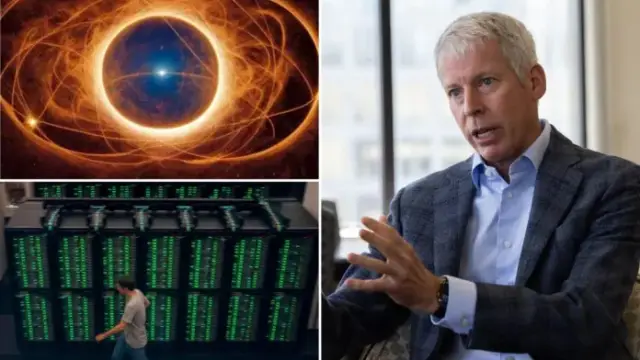The Energy Department has finalized a $1 billion agreement to develop several supercomputers aimed at facilitating scientific advancements in nuclear power, national security, and cancer treatment.
Energy Secretary Chris Wright announced the partnership with tech leader Advanced Micro Devices (AMD) on Monday, detailing plans to construct two supercomputers at Oak Ridge National Laboratory to conduct intricate, data-intensive experiments across various fields.
“Winning the AI race requires new and creative partnerships that will bring together the brightest minds and industries American technology and science has to offer,” Wright stated.
During a press briefing, Wright and AMD CEO Lisa Su disclosed that the first supercomputer, named Lux, is set to be operational within six months. This machine will utilize AMD’s MI355X AI chips, alongside central processors and networking chips from the semiconductor company.
“The focus is on speed and action,” Su remarked, emphasizing that Lux will deliver three times the AI performance of existing systems in a matter of months.
“This establishes a foundation for near-term scientific discoveries and accelerates U.S. AI research. The transformative nature of these systems lies in the partnerships behind them,” Su added.
These supercomputers aim to significantly advance research on complex scientific challenges, including the quest to harness nuclear fusion energy. Fusion energy mimics the processes powering the sun, where two nuclei combine to create a new nucleus. It has been viewed as an attractive energy source due to its negligible greenhouse gas emissions, lower radioactive waste compared to nuclear fission, and the potential to produce 10 million times more energy per unit of fuel than burning fossil fuels.
Despite its promise, the energy sector has yet to develop technology capable of sustaining fusion reactions for extended periods. Currently, the longest duration a nuclear fusion machine has maintained the necessary reaction is just over 22 minutes.
Wright expressed optimism that these new supercomputers will expedite progress in nuclear energy research, potentially making fusion a feasible alternative before the end of the Trump administration. “We’re going to get just massively faster progress using the computation from these AI systems that I believe will have practical pathways to harness fusion energy in the next two or three years,” he told Reuters.
He noted that the supercomputers will also aid in managing the nation’s nuclear arsenal and support healthcare research. “My hope is that in the next five to eight years, we will transform many cancers, which are currently considered terminal, into manageable conditions,” Wright stated.
The second supercomputer, named Discovery, will reportedly utilize AMD’s MI430 AI chips designed for high-performance computing. This project is anticipated to be completed by 2028 and operational by 2029.
While the exact energy requirements for both supercomputers remain unclear, Su indicated that they will be “hundreds of megawatts type systems.” Oak Ridge National Laboratory plans to collaborate with the Tennessee Valley Authority to secure the energy necessary to power this advanced technology.
This announcement is expected to be the first of many similar partnerships between the administration and the private sector aimed at advancing AI technologies, with Wright mentioning that there will be “dozens” of collaborations to construct facilities at national labs.
“This represents a new model for collaboration between business and government, and moving swiftly is essential,” Wright emphasized. “AI is evolving rapidly. If we adhere to the traditional pace of government, we risk falling behind, and it is critical not to be left behind.”
Su informed Reuters prior to the announcement that the deployment of this technology will be the quickest she has witnessed for computers of this scale. “This is the speed and agility we aimed for in advancing U.S. AI initiatives,” Su remarked.
The $1 billion agreement underscores the Trump administration’s commitment to gaining an edge in the AI arms race with China, a key focus of President Donald Trump’s second term.
ENERGY SECRETARY URGES FERC TO FAST-TRACK GRID CONNECTION FOR DATA CENTERS
The Energy Department plays a vital role in the administration’s efforts to promote AI advancements, supporting projects designed to enhance the reliability of the U.S. electric grid.
Additionally, Wright urged the Federal Energy Regulatory Commission last week to expedite the connection of substantial loads, such as data centers, to the grid to further support AI development.
 Telegram is where we really talk. Don't miss out!
Telegram is where we really talk. Don't miss out!









